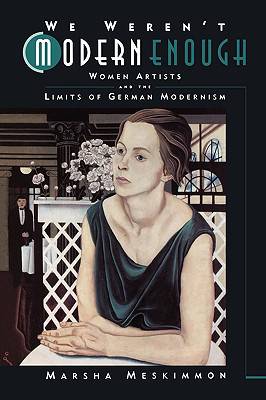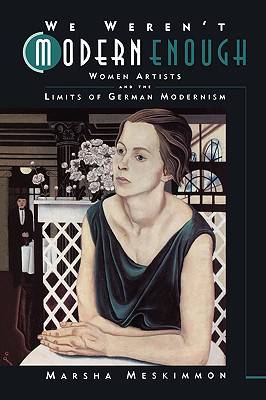
- Afhalen na 1 uur in een winkel met voorraad
- Gratis thuislevering in België vanaf € 30
- Ruim aanbod met 7 miljoen producten
- Afhalen na 1 uur in een winkel met voorraad
- Gratis thuislevering in België vanaf € 30
- Ruim aanbod met 7 miljoen producten
Zoeken
We Weren't Modern Enough
Women Artists and the Limits of German Modernism Volume 25
Marsha Meskimmon
€ 54,45
+ 108 punten
Omschrijving
Marsha Meskimmon furnishes a fresh perspective on the art of women in the Weimar Republic and in the process reclaims the lost history of a number of artists who have not received adequate attention-not only because they were women but also because they continued to align themselves with the modes of realistic representation the Expressionists regarded as reactionary. Reconsidering the traditional definitions of German modernism and its central issues of race politics, eugenics, and the city, Meskimmon explores the structures that marginalized the work of little known artists such as Lotte Laserstein, Jeanne Mammen, Gerta Overbeck and Grete Jurgens. She shows how these women's personal and professional experiences in the 1920s and 1930s relate to the visual imagery produced at that time. She also examines representations of different female roles-prostitute, mother, housewife, the "New Woman" and "garçonne"-that attracted the attention of these artists. Situating her exploration on a strong theoretical base, she ranges deftly over mass visual culture-from film to poster art and advertising-to create a vivid portrait of women living and creating in Weimar Germany.
Specificaties
Betrokkenen
- Auteur(s):
- Uitgeverij:
Inhoud
- Aantal bladzijden:
- 263
- Taal:
- Engels
- Reeks:
Eigenschappen
- Productcode (EAN):
- 9780520221345
- Verschijningsdatum:
- 14/10/1999
- Uitvoering:
- Paperback
- Formaat:
- Trade paperback (VS)
- Afmetingen:
- 150 mm x 226 mm
- Gewicht:
- 362 g

Alleen bij Standaard Boekhandel
+ 108 punten op je klantenkaart van Standaard Boekhandel
Beoordelingen
We publiceren alleen reviews die voldoen aan de voorwaarden voor reviews. Bekijk onze voorwaarden voor reviews.











